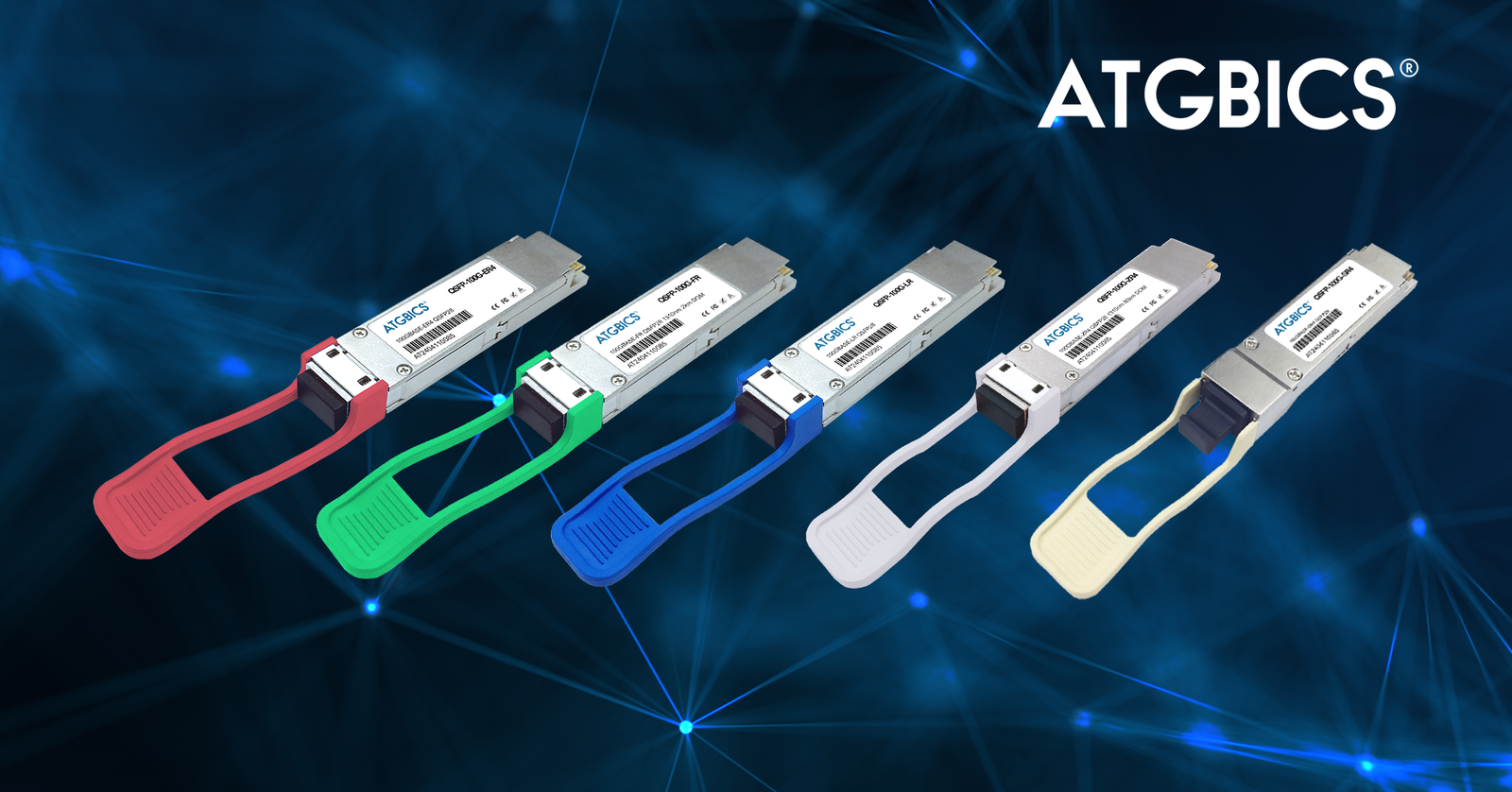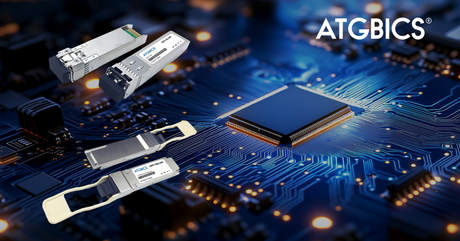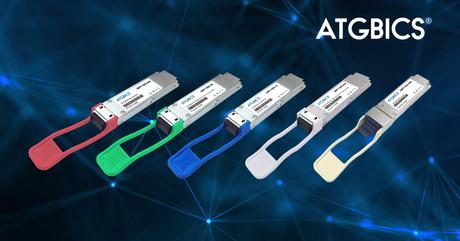100G transceivers are advanced optical modules built for 100Gbps data transmission. They play a crucial role in data centres, enterprise networking, telecommunications, and high performance computing (HPC). The main form factor for 100G transceivers is QSFP28 (Quad Small Form-factor Pluggable 28).
QSFP28
- Maximum power consumption typically < 4W
- Backward compatible with QSFP+ (40G) modules
- 4x 25Gbps channels
- 4x 25G, 2x 50G or 1x 100G breakout options
- NRZ/PAM4 modulation
- Connectors - MPO-12, Duplex LC
The QSFP28 form factor followed QSFP+ which is used for 40G transmission. The ‘28’ signifies a data rate of up to 28Gbps per channel, of which there are four. In these cases, NRZ (Non-Return to Zero) modulation is used over 4x 25Gbps channels. However, for single lambda optics PAM4 (Pulse Amplitude Modulation, 4-Level) modulation is used for 100G transmission over a single channel. Find out more about these modulation types in our knowledge base.
Single Lambda
A single lambda transceiver is an optical module that transmits and receives 100Gbps over a single wavelength (or "lambda") of light, using advanced modulation techniques like PAM4. Traditional 100G transceivers typically use four wavelengths or lanes at 25Gbps each. Single lambda transceivers simplify network design by reducing the number of optical components and fibres required. They also offer improved scalability options for upgrades to higher speeds using the same architecture. Find out more about single lambda optics in our knowledge base.
Optical Standards
|
Standard |
Maximum Reach |
Wavelength |
Media |
|
SR |
100m |
850mn |
MMF |
|
SR4 |
100m |
850nm |
MMF |
|
DR |
500m |
1310nm |
SMF |
|
FR |
2km |
1310nm |
SMF |
|
LR |
10km |
1310nm |
SMF |
|
LR4 |
10km |
1295/1300/1304/1309nm |
SMF |
|
ER |
40km |
1310nm |
SMF |
|
CWDM4 |
2km |
1271/1291/1311/1331nm |
SMF |
|
eCWDM4 |
10km |
1271/1291/1311/1331nm |
SMF |
|
PSM4 |
500m |
1310nm |
SMF |
|
ESR4 |
300m |
850nm |
MMF |
|
SWDM4 |
100m |
850/880/910/940nm |
MMF |
|
ZR4 |
>80km |
1295/1300/1304/1309nm |
SMF |

Application reference model
Benefits
100G transceivers offer a reliable and efficient solution for increasing network demands across enterprise, telecom, and data centre environments in various network architectures. Their higher data capacity and lower cost per bit compared to older technologies make them well-suited for modern infrastructure upgrades. These modules also provide improved energy efficiency, helping reduce overall power consumption in high-density deployments. Its scalability and compatibility with existing systems make it a strong foundation for upgrades to higher speeds like 200G, 400G and beyond.
Applications
- Data Centres
- Cloud Computing Networks
- Enterprise Core Networks
- Telecom & Carrier Networks
- Content Delivery Networks
- High Performance Computing (HPC)
















